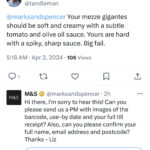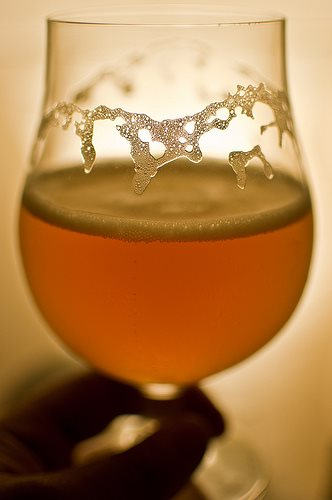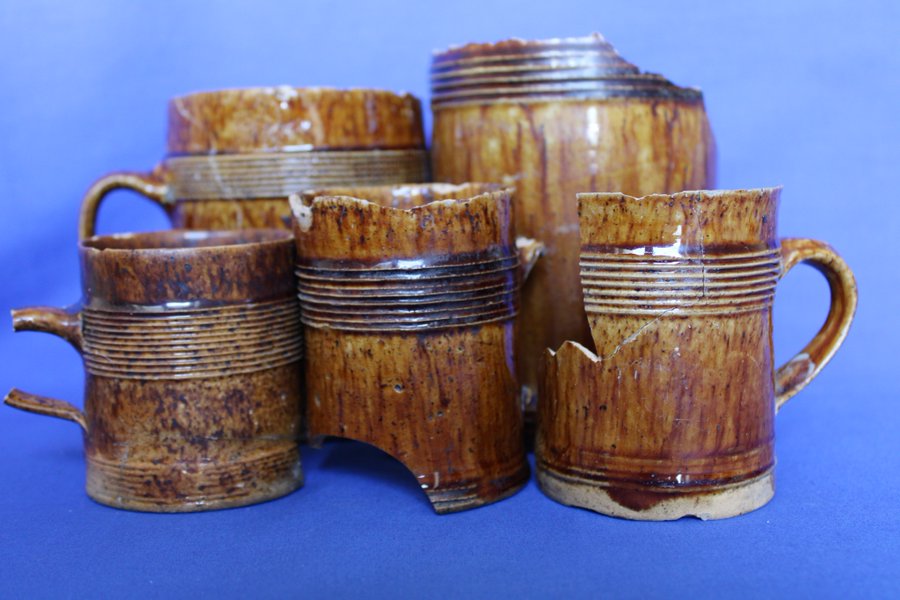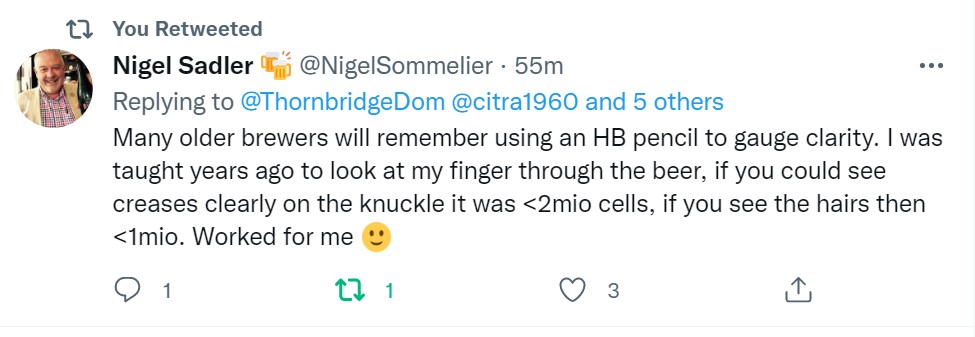I couldn’t stop myself from reusing this image…***
A couple of weeks ago, I flagged the upcoming solar eclipse that is passing over our region, as illustrated again above. All other topics have stopped, it seems. We are calm and composed but at the other end of the lake, the Ontario version fo Niagara Falls has even declared an emergency due to, according to their Mayor, the million people estimated that might show up. So… what is beer to me when the sun is about to be eaten by the moon… or is the moon eaten by the sun? Bear with me if the perspective of these notes this week veers a bit towards the centre of the solar system… but not directly. No way. We and our pets do not look at the sun… except when we can… and only with proper filtering glasses except when they aren’t needed. Easy.
First up, David Jesudason has continued his investigations of the story of Brewdog Waterloo and has noted a few very strange things. First, he has screen captured the story in the UK edition of Metro magazine which disappeared under mystereous circumstances. And he wrote a follow up piece in his newsletter Episodes of My Pub Life or rather from a duty manager from another BrewDog location did:
There are times when we stay open when I believe we 100% should not be open. We had no water on a Saturday night, it was rammed, we couldn’t wash glasses or dishes, couldn’t wash hands. The operation team was called, the situation was explained and they flippantly asked if people could use the loos in the bar next door. We just ignored them and closed. In my experience the operation managers can’t handle their workload. I feel there’s too many bars for them to manage and this leads to urgent emails regularly unanswered…
There is more but for me it is hilarious that there is a “OPERATIONS CONTROL ROOM HQ” that has to be called for permission to cope with local circumstances. Best fact: “There’s no training materials…” Speaking of power hungry beer chains, The Beer Nut himself has been investigating the phenomenon of the UK pub chain:
They sure love a chain restaurant in England. They have loads of them, and there’s something about a town like Bournemouth — lots of visitors looking for something familiar, perhaps — which seems to concentrate them. I did not go there with the intention of exploring exotic English chain restaurants. It just kind of turned out that way. There is, for example, a Brewhouse & Kitchen, a chain of brewpub-restaurants that felt to me like a modern successor to the Firkins of old, and memorably described by Boak & Bailey as “a bit like business class Wetherspoons.” Now there’s a demographic to aspire to. I wasn’t there to soak up the ambiance, however. I was there to try the beers, brewed on-site on the smart brewkit out front.
More to actual beery side of beer, Lars¹ has unleashed his powers of research and share two fact: (i) there is actually an east-west axis to Norway in addition to north-south and (ii) there is also a place called Atrå where their yeast is not kveik but berm. The story reads like the narration by John Walsh on America’s Most Wanted:
Then I stumbled across a guy on Facebook who had gotten hold of farmhouse yeast from a neighbour. In Atrå, as it turned out. He told me that several people locally had their own yeast. It was usually pitched at 30 degrees C, and everyone thought it was “old”, whatever they meant by that. Then came the surprise: nobody in the village brews in the traditional way any more. Those who brew use malt extract, but they still keep the yeast. This was very unexpected: a village with no brewing tradition, but they did have their own farmhouse yeast? Could this yeast really be genuine?
And looking back in time, Martyn has shared his clearly non-eclipse effected view of a very focused topic – the truth as to the identity of one pub in London, the Tipperary of Fleet Street:
…what of the claim that the Tipperary stands on the site of the Boar’s Head, and therefore has a history going back at least 580-plus years? Here I put myself in the hands of a man called Bren Calver, who aggregated many hours of research on the stretch of Fleet Street between Water Lane/Whitefriars Street and Bouverie Street, in particular studying contemporary illustrations, and who is convinced that the Tipperary occupies what was originally 67 Fleet Street, not the post-Great Fire 66 Fleet Street that was home to the Boar’s Head, which Calver believes was demolished around 180 years ago. This is about to get complicated, so hang on to your hat.
Laura Hadland shared some thoughts on the naming of those spaces where the brewery that brews the beer also sells you a glass of their beer:
Recently I visited the delightful Little Martha Brewing in Bristol, where I got embroiled in a fascinating discussion about the nature of pubs with co-founder and brewer Ed Morgan. Little Martha, for Ed, is assuredly a brewpub, not a taproom: “Rather than being a drinking space that is an add-on to a brewery, we’re a pub with a brewery at the back. When we started the business, the thing driving it was that we always wanted to have our own venue. We wanted to make it a cosy, warmer space certainly than some of the very large taprooms you see now. We wanted it to feel like a local pub, rather than trying to build a beer brand that would attract people here.”
For me, brewpub and taprooms that serve food are much the same thing. I was in Edinburgh’s Rose Street Brewery, drinking with the owner/brewer back in 1986. Pretty much the same set up as Middle Ages in Syracuse, NY back in 2006. When I was there, was I in a pub, a taproom, a microbrewery or a brewpub? All and none of the above… maybe.
BREAKING!!!… “Saskatchewan announces changes to homemade liquor rules”:
On Tuesday Saskatoon Churchill-Wildwood MLA Lisa Lambert announced that the province has amended liquor regulations to allow people who have applied for and received a special occasion liquor permit to serve those two types of homemade alcoholic beverages to their guests. “Previously, these products could only be served among family and friends in their own home,” she said. The new regulations officially came into effect on Tuesday. “This change is yet another example of our government’s ongoing efforts to reduce unnecessary regulation and red tape where possible,” Lambert said.****
Because… that is the one thing that is filling the jails of Saskatchewan… Uncle Fred’s homemade wine at the community Thanksgiving Supper down at the arena without a permit. Speaking of law, Beth Demmon is back with another edition of Prohibitchin’ and features Davon D. E. Hatchett, wine lawyer and The Bubbleista:
“While I was in law school, I took a class in intellectual property. I did not expect this to happen, but I LOVED the content in this class,” she says, adding that she ended up getting the highest grade in the class… But rather than set aside her passions, she decided to merge them, despite some skeptics… “I actually went and talked to one of my professors at law school when I moved back, and he essentially told me you can’t have a viable practice in trademark law,” she recalls, disappointed. While she figured out what direction she wanted to go, she started working in corporate consulting and taking continuing legal education classes that Texas required. It was there that she first realized the potential for working in beverage and hospitality law.
Jealous. I mean I never knew what sort of law I would want to do but ended up being an owner’s side bridge building lawyer. Concrete. Rebar. Geotech studies. Fun stuff. But wine law sounds really good.
Note: Gary sums up his beers of France.
We flinch about a few things… pairing… IPA… branding… but there were some interesting thoughts from the exporter perspective in The Japan Times about a category of beer that is not necessarily well framed – Japanese beer:
For Japanese beer companies, there is work to do on more clearly defining their image. Mike Kallenberger, a senior adviser at brewing and beverage industry consultancy First Key, said aside from big mainstream imports such as Corona and Heineken, the majority of beers imported into the U.S. are typically associated with a specific occasion — in the case of Japanese beers, as a pairing to Japanese cuisine. “Japanese beers are typically seen as lighter and more refreshing, which makes them very good for pairing with food. Beyond that, the current image may not be very distinct,” Kallenberger said, but noted that given the focus of Japanese brewers on the U.S. market, that perception will likely evolve.
Never lacking in focus,  The Tand displayed his full powers this week, as illutrated to the right where he took down Marks & Spencers and their farce of a mezza gigantes. this may have been deleted by some shadowy power or another. The powers behind mezza gigantes should not be underestimated in these matters. But, as we have learned from David Jesudason above, there’s more than one way to skin a cat whe we are dealing with the dark forces of the interwebs… or something like that…
The Tand displayed his full powers this week, as illutrated to the right where he took down Marks & Spencers and their farce of a mezza gigantes. this may have been deleted by some shadowy power or another. The powers behind mezza gigantes should not be underestimated in these matters. But, as we have learned from David Jesudason above, there’s more than one way to skin a cat whe we are dealing with the dark forces of the interwebs… or something like that…
Speaking of full powers, if you sign up for Boak and Bailey‘s Patreon account, you will learn the secret behind this statement:
It was the fastest Ray has drunk a single pint for a very long time and we both stayed on it for the rest of the session.
And still in Britain, The Daily Star has identfied a good marketing tool for these troubled times – one that even the Tand himself has not trotted out – ale is cheap!
With the cost of living crisis ongoing, many of us are dodging the pub in favour of boozing at home or cutting back on alcohol altogether. But for those of us who still enjoy an evening at the local watering hole, we can keep costs lower by opting for a drink other than lager – which, on average, set consumers back £4.24 in 2022… In contrast, ales – including stouts – cost just £3.60 in 2022, about 15% less than lager… Ales tend to be the more budget-friendly option in general…
Stan has declared “MayDay!!” for April and won’t be back for four whole weeks* but left us some good beery links including some considerations on the pretendy world of A.I. as it relates to beer:
I remain skeptical about AI beer recipes, but the information that Kevin Verstrepen’s laboratory at the University of Leuven shares could also be put to good use by humans. Consider this:
“Both approaches identified ethyl acetate as the most predictive parameter for beer appreciation. Ethyl acetate is the most abundant ester in beer with a typical ‘fruity’, ‘solvent’ and ‘alcoholic’ flavor, but is often considered less important than other esters like isoamyl acetate. The second most important parameter identified by SHAP is ethanol, the most abundant beer compound after water.”
Ah, yes. alcohol. So plenty to read in the Nature Communications article, and a lot of sexy charts.
Alcohol?!?!? Speaking of alcohol,** Pellicle published a piece by Alistair of Fuggled fame on Big Fish Cider of Monterey, Virginia:
Each autumn, Kirk’s father would harvest his trees—amongst them a Northern Spy, a Grimes Golden, and a Winesap—pressing the fruit to make sweet cider, which they stored in a barrel. It was here that Kirk’s lifelong obsession with apples and cider began. “I can still remember the scent hitting my nose, and the flavour just exploding in my mouth, and I still think fresh cider off the press is the best thing going,” says Kirk in his soft Virginian drawl. “I love the taste of apples, I love the smell of the bloom. My mom reminded me that I would come in and say if I could make a perfume with the smell of an apple bloom, I could be a millionaire. I never did make it mind.”
Finally, Pete Brown was in The Guardian this week giving advice to the beer drinking fitba fans has part of a bit of a paranoid series of stories about strong lagers in the lead up to Euro 2024 in Germany based on a bit of a confessional:
Years ago, at the start of my career as a drinks writer, I visited Oktoberfest for the first time. The beer at the festival is served in litre tankards… You swing them as much as you drink them, the beer disappears quickly as you sway along to the band and you have quite a few, but it’s OK because the beer is Helles, a light lager style at about 4% ABV. So when we visited a biergarten the following day and saw Oktoberfest Bier being sold by the Maẞ, I naturally assumed it was the same thing we had been drinking at Oktoberfest… It’s typically between 6% and 7% ABV. I didn’t know this. I had seven steins over the course of the afternoon, and then I tried to stand up. We’ll draw a veil over what happened next.
Me? Been there. Syracuse, NY. Blue Tusk circa 2007 or so. Being served a stout whch was actually my first 10% imperial stout. Then four more pints. Samesies.
Enough!! We roll our eyes at misspent yuff as, again, we roll the credits… well, the credits, the stats the recommends and the footnotes and the many ways to find good reading about beer and similar stuff via any number of social media and other forms of comms connections. This week’s update on my own emotional rankings? Facebook still in first (given especially as it is focused on my 300 closest friends and family) then we have BlueSky (126) rising up to maybe… probably… likely pass Mastodon (914) in value… then the seemingly doomed trashy Twex (4,468) hovering somewhere above or around my largely ignored Instagram (163), with sorta unexpectly crap Threads (43) and not at all unexpectedly bad Substack Notes (1) really dragging up the rear – and that deservedly dormant Patreon presence of mine just sitting there. Fear not!
Want to keep up with the news before next Thursday? Check out Boak and Bailey every Saturday and Stan the very next Monday he decides to show up at the office. Look at me – I forgot to link to Lew’s podcast. Fixed. Get your emailed issue of Episodes of my Pub Life by this year’s model citizen David Jesudason on the odd Fridays. And Phil Mellows is at the BritishBeerBreaks. Once a month, Will Hawkes issues his London Beer City newsletter and do sign up for Katie’s now revitalised and wonderful newsletter, The Gulp, too. Ben’s Beer and Badword is back with all the sweary Mary he can think of! And check out the Atlantic Canada Beer Blog‘s weekly roundup. There is new reading at The Glass which is going back to being a blog in this weeks best medium as message news. Any more? Yes! Check to see the highly recommended Beer Ladies Podcast. That’s quite good. And I listened to the BOAS podcast bro-ly interview of Justin from Matron. And the long standing Beervana podcast . Plus We Are Beer People. There is the Boys Are From Märzen podcast too and Ontario’s own A Quick Beer. There is more from DaftAboutCraft‘s podcast, too. All About Beer has introduced a few podcasts… but some may be losing steam. And there’s also The Perfect Pour. Plus follow the venerable Full Pint podcast. And the Craft Beer Channel on Youtube and remember BeerEdge, too, and The Moon Under Water… if you have $10 a month for this sort of thing… I don’t. Pete Brown’s costs a fifth of that. There was also the Beer O’clock Show but that was gone after a ten year run but returned renewed and here is the link! Errr… nope, it is gone again.
*Yes, that is how months generally work.
**Which reminds me to note again how it was not good beer hunting again this week.
***Cry for help or what… hey, what do you mean it’s a crappy headline image… and what do you mean this footnote is out of chronological order? YOU’RE OUT OF ORDER!!!
****Note: the government claims to have reduced red tape by adding a new class of permit… think about that for a moment…
¹Beer history’s Tommy Hunter.


















